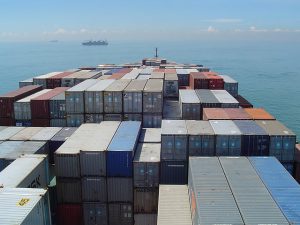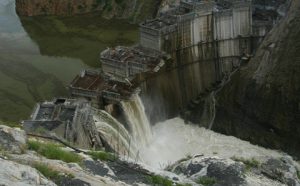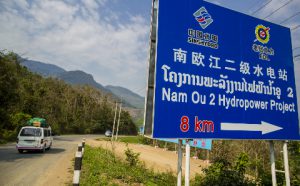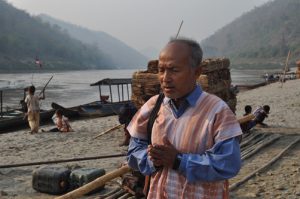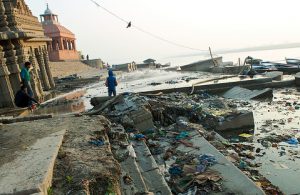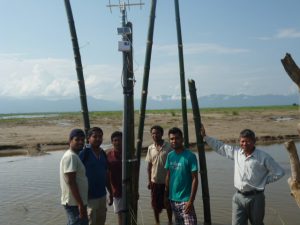At the end of this year cars and container trucks loaded with goods from China and Thailand will finally be able to drive across a multi-lane bridge spanning the Mekong River (known as the Lancang in China). The bridge will connect Chiang Rai province in Thailand to Bokeo province in Laos, effectively linking China’s highways stretching south from Beijing and Shanghai to those coming north from Singapore, Kuala Lumpur and Bangkok.
Funded by equal investment from the Chinese and Thai government, the completion of the bridge, which took ten years of planning and two years to build, is not without controversy. For many years Thailand held back investment due to an uneven distribution of benefits between China, Laos and Thailand. Also on the Thai side, the NGO Rak Chiang Khong claim the bridge negatively impacts the local Golden Triangle economy and will ruin Mekong fisheries.
The Golden Triangle Bridge serves to highlight the challenges facing China, as the country’s new leadership attempts to balance its slowing and volatile economy and deliver domestic stability by maintaining peaceful economic relations with its neighbours.
China’s regional strategy
“In 2012 China’s growth in trade and outward investment with the four other Mekong countries of Myanmar, Laos, Thailand, and Cambodia surpassed its trade and investment growth in ASEAN countries,” said Xu Ningning, chairman of the Greater Mekong Subregion (GMS) Business Council. “Greater growth rates will continue with increases in regional cooperation and win-win investment opportunities.”
For the past three years China’s GMS provinces of Yunnan and Guangxi have posted growth rates of 12-15%, the highest of China’s localities, and arguably China’s economic rise has also helped deliver high growth rates among Mekong countries.
The end of the Cold War in the 1990s created a favourable environment for China to develop its economic cooperation strategies toward the Mekong region. The blurring and opening of once inviolable borders encouraged traders on both sides of the China-Southeast Asia frontier to appeal to local and national governments for better conditions for trade and migration. The Chinese government responded with twenty years of state-led trade liberalisation and investment policies to promote regional cooperation in state and private sectors.
China’s economic cooperation strategies towards its four Mekong neighbours has dovetailed nicely into a strategy that fits China’s current development needs. Liu Jinxin, a policy analyst and logistics expert says, “Unlike the US which leads the world in finance and IT, both high-value service-oriented industries, China is the world’s factory, producing goods to drive the growth of its growing middle class and serving export markets around the world. To survive, the Chinese ‘factory’ needs inputs like energy and raw materials.”
Liu Jinxin highlights the Chinese built strategic oil and natural gas pipelines cutting through Asia, particularly the PetroChina pipeline project from Myanmar’s Indian Ocean coastline to Kunming in China’s Yunnan province, as well as a hydropower energy grid extending into Laos and Myanmar.
“We’ve created this network because it’s our only guarantee for stability. The robust flow of these inputs can only be guaranteed by maintaining peaceful relations with all of our neighbours.”
But is an approach based on geo-economic cooperation a sustainable long term strategy for both China and its Mekong neighbours? The PetroChina pipeline cutting through Burma serves as a test of the region’s commitment to China’s geo-economic strategies. Not only does the Myanmar government have the power to choke a strategic energy flow to China, but a Japanese firm holds majority ownership of the Burmese port on the Indian Ocean end of the pipeline. Nationalist sentiments inside China could accuse the Chinese government of being held hostage not just by Japan but by Myanmar, thus threatening the stability guaranteed by China’s geo-economic approach.
During a conversation last year a colleague who works for a Chinese government institution promoting cooperation between China and Mekong countries threw his hands into the air in frustration over the current state of affairs. “We’ve given these countries so much in terms of infrastructure development and uneven trade promotion, but they continue to want to take advantage of us or threaten to walk away from our agreements.”
China-Myanmar relations have cooled in recent years with Myanmar’s transition to democracy and the suspension of a Chinese-backed project. Vietnam-China relations have also followed suit with Vietnam slapping trade restrictions on certain Chinese goods. This year Vietnamese ministerial level delegations were conspicuously absent from Kunming’s regional trade fairs.
China exports ‘growth first’ model to the Mekong
In many ways China has exported its state-led, growth-at-any-cost development model to the Mekong region. Less developed countries stand to benefit economically from Chinese-backed infrastructure development projects like the US $7.2 billion high-speed railway from northern Laos to Vientiane and hydropower projects on the main stem of the Mekong in Laos and Cambodia.
However an even distribution of those benefits is unlikely and can only be realised once Laos and Cambodia pay off their colossal debts to China. China’s construction of eight hydropower projects on the upper Mekong River in Yunnan province has shown Laos that it can ignore protests from downstream countries about the negative effects of its dams.
This isn’t the only environmental risk for China’s Mekong neighbours. In China hydropower developers can easily skirt environmental laws and produce misleading environmental impact assessments. Dr Zhou Dequn, a conservation biologist at Kunming’s University of Science and Technology argues that these kinds of malpractice have also occurred on Chinese-funded hydropower projects in Laos.
“China is exporting its business behaviours and ignorance of rule of law practices to the Mekong region. Our wealthy businessmen abroad do not have the interest or technical capacity to promote sustainable practices, nor do they consider the legal context of their actions,”
Hydropower threatens food security
Laos’ plans to develop eleven dams on the mainstream of the Mekong and more than seventy on its tributaries for energy export to China and Thailand. Whilst this will boost its energy resource portfolio, it risks jeopardising its natural resources, especially fisheries.
Eric Baran from the World Fish Institute claims that the Mekong is the world’s largest inland fishery with nearly 10% of the world’s entire freshwater fish catch. 60% of the population of Laos and Cambodia relies on caught fish for 100% of their daily protein intake. Mekong dams in Laos could cut off the natural migratory patterns of more than 110 fish species and translate into the loss of up to 800,000 tons of caught fish (42% of the Mekong’s fish catch) every year, creating a potential food security dilemma in Laos and Cambodia.
Moreover, China’s importing of hydropower from Southeast Asia is part of a push to reduce its carbon footprint by investing in renewable energy. However, to replace the loss of protein from Mekong fisheries, Laos and Cambodia will be forced to invest in industrial, carbon intense livestock raising; thus China’s carbon footprint will simply have been sent downstream.
This March at a workshop on food security in the Mekong region in Chiang Rai, former Thai senator Kraisak Choonhavan said, “What we have to do is maintain food security throughout these periods of rapid development and make wise and sustainable decisions about the future of this region.”
State-led strategies stifles sustainable solutions
A major criticism of China’s state-led geo-economic strategy is that while it advocates security and interdependence between countries based on deepening economic ties, it fails to promote connections among the complex nexus of stakeholders in both China and the region at large. The exclusion of key stakeholders in policy discussions creates an uneven playing field that not only misallocates resources and leads to inefficiency, but also disenfranchises individuals and institutions who can provide sustainable solutions to regional challenges.
“A core mission of NGOs should be to ensure that project developers take care to evaluate social and environmental impacts and award compensation before construction begins,” says Dr Yu Xiaogang, director of Green Watershed, an influential Chinese NGO that assesses the impact of hydropower projects on local communities.
“NGOs should conduct solid and accurate investigations and identify gaps in policy implementation. We should regard the government as a partner and realise policy makers are convinced only by factual evidence.”
If China wishes to improve its deteriorating reputation in the region it will need to revise its geo-economic strategy. One element of this should be to promote the actions of a wider range of stakeholders. China should also demonstrate rule of law best practices to its Mekong neighbours, particularly when conducting social and environmental impact assessments of infrastructure development projects. Without these changes, China’s regional strategies and the sustainability of the Mekong region are at serious risk.
